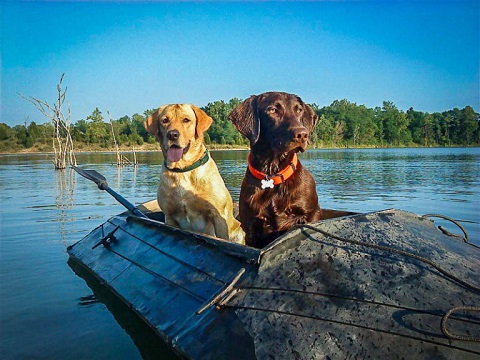
Report Date:
http://californiaoutdoorsqas.comQuestion: I have a question regarding a human-powered boat for duck hunting. I understand from the regulations that sails and motors can’t be used, but paddles and oars can. My boat has a prop for propulsion, but it isn’t gas or battery powered. Instead, it has bike pedals so I power it with my legs. It’s called a drive so would that be considered a motor? I am wondering if the “spirit of the law” originally allowed for the use of human power, but because pedals weren’t thought about when the law was written, they aren’t specifically mentioned under the “letter of the law.” How would this be enforced? Would I be OK to use it? (Doug T.)
Answer: Your drive may give the impression that your boat is under power, so if you are checked in the field, I would expect that you would be thoroughly inspected to determine the source of propulsion.
Regulations generally prohibit the take of “any bird or mammal from any type of motor-driven air or land vehicles, motorboat, airboat, sailboat or snowmobile” (California Code of Regulations Title 14, section 251). However, take is allowed if “the motor of such motorboat, airboat or sailboat has been shut off and/or the sails furled and its progress therefrom has ceased, and it is drifting, beached, moored, resting at anchor or is being propelled by paddle, oar or pole.”
Since our regulations don’t define what a “motor” is, courts would interpret the word by looking at the dictionary. Most definitions of motor seem to point to a machine or engine. However, many definitions refer to devices that convert one kind of energy into mechanical energy to produce motion. Given this potential ambiguity, many wildlife officers would likely not cite you for shooting from your human powered boat. But, to avoid the potential of being cited, the California Department of Fish and Wildlife (CDFW) recommends you take the propeller out of the water in addition to being stopped while actively hunting.
Lobster double limits?
Question: What form will I need to obtain in order to possess double limits of lobster and what requirements are there? Thank you. (John K.)
Answer: The daily bag and possession limit is seven lobsters. Generally, the law only allows a person to possess a single limit (CCR Title 14, section 1.17). The only exception would be for multi-day trips as authorized under CCR Title 14, section 27.15. This section requires you to submit a Declaration for Multi-Day Fishing Trip to CDFW and to keep a duplicate on the vessel. The trip must be continuous and extend for a period of 12 hours or more on the first and last days of the trip. If you were diving for lobster for 12 hours or more before midnight on the first day of your trip, then you would be able to take your second day’s limit after midnight, as long as your trip extended for at least 12 hours on the second day as well.
The multi-day fishing declaration process is intended to allow persons fishing offshore, on a trip that lasts multiple days, to catch and keep up to three daily limits of finfish, lobster and rock scallops (in Southern California). In addition, no berthing or docking is permitted within five miles of the mainland shore, including Catalina Island. If passengers disembark the vessel to spend time ashore in Avalon, the trip is not continuous and the permit is invalid. This is the intention of the section when it talks about not berthing along the mainland shore.
Are artificial fish scent attractants considered bait?
Question: Are products like artificially scented fish eggs considered “bait” when it comes to areas where the regulations call for artificials only? My guess is they would be considered bait, but what about just plastic salmon egg imitations with no scent? Does scent play into the regulations at all? (Mike S.)
Answer: An artificial lure is “a man-made lure or fly designed to attract fish. This definition does not include any scented or flavored artificial baits.” (CCR Title 14, section 1.11). This means attractants may not be applied to the lure while fishing in waters restricted for artificial lure use.
In addition, some people spray WD-40 on their lures. This substance contains petroleum and is specifically prohibited by law to be deposited or introduced into the waters of the state (Fish and Game Code, section 5650).
Pistol on a wildlife area?
Question: Is it legal for me to have a pistol unloaded and locked up in my truck while hunting at a wildlife area for ducks (for example, in the Mendota Wildlife Area)? (David R.)
Answer: Yes, as long as the pistol is securely locked and stowed.
Carrie Wilson is a marine environmental scientist with the California Department of Fish and Wildlife. While she cannot personally answer everyone’s questions, she will select a few to answer each week in this column. Please contact her at CalOutdoors@wildlife.ca.gov.Report Date:
On Dec. 24 and Dec. 26, more of the California coastline will open to the commercial Dungeness crab fishery. Some......
Report Date:
The California Department of Fish and Wildlife (CDFW) today announced that it is awarding $40 million in Proposition 1 funds......